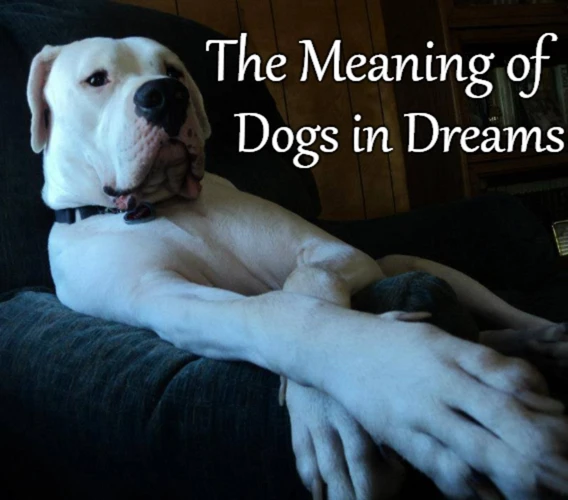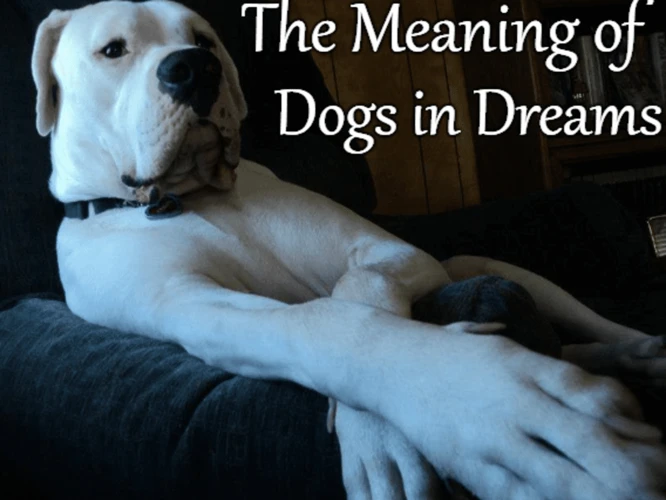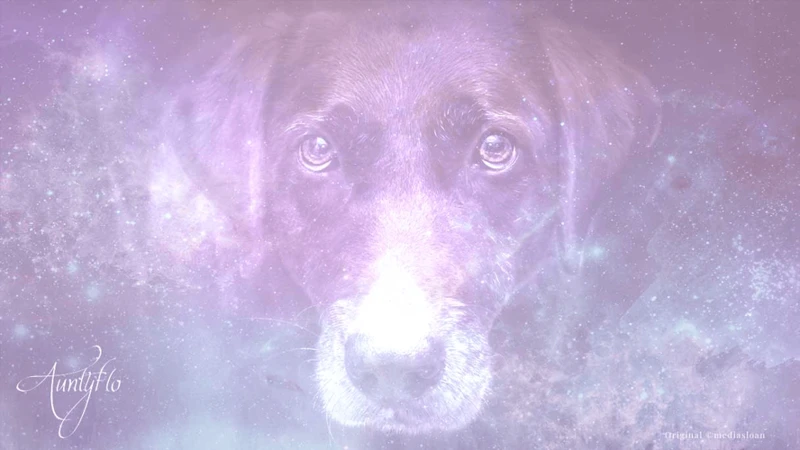Have you ever wondered what goes on in a dog’s mind when they are fast asleep? It is a topic that sparks curiosity and intrigue among dog owners and enthusiasts alike. Understanding Canine Dreams is a fascinating subject that delves into the mysterious world of a dog’s dreams. From deciphering the nature of their dreams to unraveling the intriguing interpretations, this article will take you on a journey of discovery. Discover the significance of the dog-owner relationship in dreams and unlock the secrets behind the symbols and actions found in canine dreams. Explore why dogs dream about their owners and how these dreams reflect their emotional bond and loyalty. Dive into the benefits of canine dreams, such as mental and emotional processing, strengthening the dog-owner bond, and even potential healing and spiritual growth. Finally, learn how to interact with your dog’s dream experiences, recognizing and responding to disturbed dreams, and creating a peaceful sleeping environment for your beloved canine companion. Get ready to uncover the captivating realm of canine dreams and deepen your connection with your furry friend.
Understanding Canine Dreams

When it comes to the nature of canine dreams, there is still much to uncover. While we cannot ask dogs about their dreams directly, researchers have made significant progress in understanding the similarities between human and canine sleep patterns. Dogs, like humans, go through different stages of sleep. During the REM (rapid eye movement) stage, which is associated with dreaming in humans, dogs also exhibit similar brain activity. It is believed that dogs dream about various experiences and emotions they encounter throughout the day, just like we do. This stage of dog sleep is characterized by twitching, paw movement, and sometimes even vocalization, which suggests they are actively engaging with their dreams. While we may not know the exact content of their dreams, it is clear that canine dreams play a crucial role in their mental and emotional well-being.
While we may not be able to decode the specific content of a dog’s dream, there are some common themes that often emerge in canine dreams. For example, dogs may dream about running, playing, or engaging in activities they enjoy. This is often accompanied by twitching or wagging of their tails. It is believed that these dreams reflect their daily experiences and interactions, as dogs tend to dream about things they have encountered in their waking lives. Another common theme is social interaction, where dogs may dream about interactions with other dogs, their owners, or even other animals they have encountered. This highlights the significant role that relationships play in a dog’s dream world. Understanding these common themes can provide valuable insights into the inner world of our four-legged friends and allow us to deepen our understanding and connection with them.
1. The Nature of Canine Dreams
When exploring the nature of canine dreams, it is important to consider the similarities and differences between dog and human dreaming experiences. Dogs, like humans, have different sleep stages, including the REM stage associated with dreaming. During this stage, dogs may exhibit behaviors like twitching, whimpering, or even running movements. Research suggests that dogs dream about experiences and emotions they encounter while awake, just as humans do. While we can’t know the exact content of their dreams, their actions during sleep and similarities in brain activity suggest that their dreaming experiences are meaningful to them. Dogs may dream about their daily activities, such as playing, running, or engaging in social interactions. This reflects the way they process information and consolidate memories while they sleep. The nature of canine dreams seems to parallel human dreams in terms of the involvement of emotions, memories, and sensory experiences.
2. Common Themes in Canine Dreams
In canine dreams, there are several common themes that often emerge. One such theme is related to activities and experiences dogs enjoy during their waking hours. Dogs may dream about running freely in open spaces, playing fetch, or interacting with their favorite toys. These dreams are often accompanied by tail wagging, twitching, and even the occasional playful vocalization. Another common theme in canine dreams is social interaction. Dogs may dream about spending time with their owners, playing with other dogs, or even encountering different animals they have encountered in real life. These dreams reflect the importance of relationships in a dog’s life and highlight their desire for social connection. Additionally, some dogs may dream about engaging in activities related to their natural instincts, such as chasing or digging. These dreams tap into their innate behaviors and instincts, providing a sense of fulfillment even while they are asleep. The common themes in canine dreams offer a glimpse into the rich and diverse dream world of our canine companions, allowing us to better understand their desires, experiences, and emotions.
3. The Significance of Dog-Owner Relationship in Dreams
The significance of the dog-owner relationship in dreams is an intriguing aspect of canine dreams. Dogs often dream about their owners as they hold a special place in their hearts and minds. These dreams can serve as a reflection of the deep emotional bond shared between a dog and its owner. In these dreams, dogs may engage in activities they do with their owners, such as playing fetch, going for walks, or simply cuddling together. These dreams can also be a manifestation of the pack instincts ingrained in dogs. Dogs are social animals that thrive on companionship and rely on their owners for love, care, and security. Dreaming about their owners reinforces their need for a strong emotional connection and sense of belonging. Additionally, dreams about their owners may bring comfort to dogs, especially when they are apart or during times of stress or anxiety. It is a testament to the affection and loyalty that dogs have for their owners, even in their subconscious state.
Interpreting Canine Dreams

Decoding the symbols and actions in canine dreams can provide valuable insights into a dog’s internal world. While we can’t ask dogs directly about the meaning behind their dreams, there are certain indicators we can look for. For example, if a dog is wagging its tail or appears happy in its dream, it could suggest that they are reliving a positive experience or engaging in an enjoyable activity. On the other hand, if a dog appears fearful or restless, it might indicate that they are reliving a stressful or anxious event. Paying attention to the body language and vocalizations during the dream can give us clues about the emotions and experiences being replayed. However, it’s essential to remember that interpretations of canine dreams are subjective and can vary from one dog to another. It’s important to observe and understand the individual dog’s behavior, personality, and context to make sense of their dreams effectively. By connecting their dreams to real-life experiences, we can gain a deeper understanding of their inner thoughts and feelings and strengthen our bond with our furry companions.
1. Decoding Symbols and Actions in Canine Dreams
When it comes to decoding the symbols and actions in canine dreams, it’s important to observe and interpret their behaviors during sleep. Dogs may exhibit movements and vocalizations that can give us clues about what they are dreaming about. For example, if a dog is wagging its tail or twitching its paws, it could indicate a dream about playing or engaging in activities they enjoy. Similarly, if a dog is whimpering or growling in their sleep, it may suggest a dream involving fear, anxiety, or perhaps a confrontational scenario. It’s important to note that the interpretation of these symbols and actions will vary from dog to dog, as every dog has its own unique experiences and emotions. By observing our dogs’ behaviors during their dreams and considering their real-life experiences and emotions, we can begin to decipher the symbols and actions in their dreams and gain a deeper understanding of their inner world.
2. Connecting Dreams to Real-Life Experiences
Connecting canine dreams to real-life experiences can provide valuable insights into our dogs’ thoughts and emotions. When you observe your dog dreaming, pay attention to their body language, movements, and vocalizations. Are they twitching their legs as if they are running? Are they softly growling or barking in their sleep? These actions can provide clues about what they may be dreaming about. For example, if your dog recently had a playdate with a furry friend, their dream could be a reflection of that joyful experience. Similarly, if your dog had a scary encounter with a snake, they may have a dream where they are fleeing from the serpent. By connecting their dreams to real-life experiences, we can gain a deeper understanding of our dogs’ inner world and their emotional state. This understanding allows us to provide comfort and support when they may be feeling anxious or fearful. Dreams about snakes are particularly interesting because they can have different interpretations based on the context and individual associations. Being attentive to your dog’s behaviors and experiences can help you make the connection between their dreams and their real-life encounters.
Why Dogs Dream About Their Owners

Why dogs dream about their owners can be attributed to several factors that highlight the deep emotional bond between dogs and their human companions. Firstly, dogs are pack animals with a strong instinct to form social connections. This instinct extends to their dreams, where the presence of their owner symbolizes security, love, and belonging. Dogs often dream about their owners as a way of reaffirming their attachment and seeking comfort. Additionally, dogs rely on their owners for security and safety in their waking lives. In their dreams, they may replay scenarios where their owner protects them or provides a sense of reassurance. This dependence on their owners for security and comfort translates into their dream world. Dogs are known for their unwavering loyalty and affection towards their owners. Dreaming about their owners is a reflection of this devotion, where their dreams may encompass acts of love, cuddles, and playfulness. The presence of their owner in their dreams is a testament to the deep emotional connection they share. Dogs, like humans, use dreaming as a way to process emotions and experiences, and their dreams often revolve around the people who hold significant importance in their lives – their cherished owners.
1. Emotional Bond and Pack Instincts
The first reason why dogs dream about their owners is the emotional bond and pack instincts they share. Dogs are highly social animals that form strong bonds with their human companions. These bonds stem from the pack instinct that dogs have inherited from their wolf ancestors. When dogs dream about their owners, it reflects the deep emotional connection they feel towards them. Just like humans, dogs experience feelings of love, attachment, and loyalty. In their dreams, dogs may visualize moments spent with their owners, such as playing fetch, going for walks, or receiving affectionate gestures. These dreams serve as a way for dogs to process their emotions and reinforce the bond they share with their owners. It is a testament to the profound impact that humans have on the lives of their canine companions and showcases the unique and special relationship between dogs and their owners.
2. Dependence on Owners for Security and Comfort
Dogs are known for their innate need for security and comfort, and this extends to their dream world as well. Dogs have a strong dependence on their owners for emotional support, protection, and a sense of safety. Just as they seek solace and reassurance from their owners when awake, dogs may also dream about moments of vulnerability or seeking comfort from their loved ones. These dreams could manifest in various ways, such as dogs seeking physical closeness, dreaming about being cuddled or petted, or even dreaming about their owners being present in challenging situations. It is a reflection of the deep bond dogs share with their owners and their reliance on them for a sense of security. Understanding this aspect of canine dreams can further emphasize the importance of providing a stable and nurturing environment for our furry companions.
3. Reflection of Canine Loyalty and Affection
Dogs are known for their unwavering loyalty and affection towards their owners, and this is also reflected in their dreams. When dogs dream about their owners, it is a reflection of their deep bond and attachment. In these dreams, dogs may engage in activities that involve their owners, such as playing fetch, going for walks, or simply cuddling together. These dreams serve as a testament to the strong emotional connection dogs have with their owners. The dream experience allows dogs to express their love and loyalty in ways that may not be possible in their waking lives. It reinforces the idea that dogs see their owners as a source of security, love, and comfort. When interpreting canine dreams, it is important to recognize the significance of the dog-owner relationship and the impact it has on the dreamscape. Through their dreams, dogs reaffirm their affectionate nature and deep-rooted attachment to their human companions.
Understanding the Benefits of Canine Dreams

Understanding the benefits of canine dreams provides valuable insights into the importance of these dream experiences for dogs. One significant benefit is the role dreams play in mental and emotional processing. Just like humans, dogs encounter various stimuli and experiences throughout the day, and dreaming allows them to process and make sense of these experiences on a subconscious level. Dreams help dogs process emotions, memories, and learnings, leading to improved overall cognitive function. Additionally, dreams play a crucial role in strengthening the bond between dogs and their owners. When dogs dream about their owners, it reflects the deep emotional connection and sense of security they feel in their presence. These dreams contribute to the emotional well-being of dogs and reinforce their loyalty and affection toward their owners. Canine dreams can also be a source of healing and spiritual growth. They provide a space for dogs to work through anxieties, fears, or traumas experienced in their waking lives. By allowing dogs the opportunity to process and release these emotions in their dreams, it can lead to a sense of healing and growth within them. Understanding and honoring the benefits of canine dreams contributes to the overall well-being and happiness of our beloved furry companions.
1. Mental and Emotional Processing
Mental and emotional processing is an essential function of canine dreams. Just as humans process their thoughts and emotions during sleep, dogs also use their dream state for this purpose. Dreams serve as a way for dogs to make sense of their experiences, process emotions, and consolidate memories. For example, if a dog had a particularly eventful day filled with new stimuli, challenges, or even stressful situations, they may dream about these events as a means of mentally processing and integrating the emotions associated with them. This processing function is crucial for a dog’s overall well-being and can contribute to their emotional growth and resilience. By allowing dogs to engage in this dream processing, we are facilitating their mental and emotional development. It is important to provide a safe and peaceful sleeping environment for our furry friends to promote healthy mental and emotional processing during their dreams.
2. Strengthening the Dog-Owner Bond
Strengthening the dog-owner bond is one of the many benefits that can arise from canine dreams. Dreams provide a unique window into the emotions and experiences a dog encounters, allowing us to deepen our understanding of their inner world. When dogs dream about their owners, it reinforces the emotional connection and attachment they have with us. These dreams can evoke feelings of love, loyalty, and security, which in turn enhances the bond between dogs and their owners. It is important to recognize the significance of these dreams and nurture the relationship by spending quality time together, engaging in activities that bring joy, and providing a safe and comforting environment. By attending to our dogs’ needs and responding to their dreams, we can build a stronger and more meaningful connection with them. So, the next time your dog curls up for a nap, remember that their dreams are a valuable opportunity to strengthen the dog-owner bond and create lasting memories together.
3. Healing and Spiritual Growth
Healing and spiritual growth are two significant benefits associated with canine dreams. Dogs, like humans, can experience emotional distress or traumatic events that impact their well-being. Through the process of dreaming, dogs have the opportunity to process and heal from these experiences. Dreams can serve as a form of emotional release and provide a therapeutic outlet for dogs to work through any lingering fears, anxieties, or past traumas. Additionally, dreams can aid in spiritual growth for dogs, allowing them to tap into a deeper understanding of their inner selves and their connection to the world around them. It is believed that during these dream experiences, dogs may tap into their intuitive senses and explore the depths of their subconscious. For dog owners, witnessing their furry companions engage in the healing and spiritual growth process through dreams can be a truly profound and awe-inspiring experience. Understanding and supporting this aspect of dogs’ dream experiences can contribute to their overall well-being and enhance the bond between dog and owner.
Interacting with Dogs’ Dream Experiences
When it comes to interacting with dogs’ dream experiences, it is important to be aware of their emotions and reactions during and after a dream. Dogs may sometimes have disturbed dreams, which can be distressing to witness. Recognizing signs of distress, such as whimpering, growling, or rapid movements during sleep, is crucial in understanding when a dog is having a disturbed dream. In such cases, it is best to let them naturally wake up from the dream and provide them with comfort and reassurance. It’s important not to startle or wake them abruptly, as this can lead to disorientation or confusion. Creating a peaceful sleeping environment for dogs can also contribute to more positive dream experiences. Providing a comfortable and secure sleeping environment, free from disturbances and loud noises, can help promote better sleep and reduce the chances of disturbed dreams. By being mindful and responsive to their dream experiences, we can nurture and support our furry companions in their sleep journey.
1. Recognizing and Responding to Disturbed Dreams
Recognizing and responding to disturbed dreams in our dogs is essential for their well-being. Dogs, like humans, can have nightmares or dreams that cause them distress. It’s important to be attentive to their behavior during sleep. If your dog shows signs of agitation or fear, such as whimpering, growling, or excessive panting, they may be experiencing a disturbed dream. Recognizing these signs is the first step in providing support and comfort to your furry friend. In such situations, it’s crucial not to wake your dog abruptly, as they may become disoriented or frightened. Instead, gently wake them up by calling their name or softly stroking them. Comforting words and gentle petting can help reassure them and ease any anxiety. Creating a calm and safe sleeping environment for your dog can also contribute to more peaceful dreams. By understanding and responding to their disturbed dreams, we can ensure our dogs feel secure and loved, both awake and asleep.
2. Creating a Peaceful Sleeping Environment for Dogs
Creating a peaceful sleeping environment is crucial for ensuring that your dog has a restful night’s sleep and has pleasant dream experiences. Here are some tips to consider:
– Choose a comfortable bed: Invest in a comfortable and supportive bed for your dog. Consider their size, breed, and any specific needs they may have, such as orthopedic support for older dogs or cooling beds for warmer climates. Providing a cozy space for your dog to sleep can contribute to better sleep quality and potentially more enjoyable dreams.
– Minimize distractions: Create a quiet and calm environment for your dog to sleep in. Keep their sleeping area away from noisy appliances or high-traffic areas of your home. Utilize curtains or blinds to block out excessive light, as this can disturb their sleep patterns and dreams.
– Provide a secure space: Dogs need to feel safe and secure while sleeping. Consider providing a designated sleeping area or crate that your dog can retreat to. This can mimic the feeling of a den, which aligns with their natural instincts and creates a sense of security.
– Establish a bedtime routine: Establishing a consistent bedtime routine can signal to your dog that it is time for sleep. This routine can include activities such as a calming walk, gentle playtime, or quiet bonding moments with you. Consistency will help your dog associate these activities with winding down and falling into a peaceful sleep.
By implementing these practices, you can create a soothing and serene environment that promotes restful sleep and helps your dog have pleasant and restorative dream experiences. Remember, a well-rested dog is a happy and healthy companion.
Conclusion
In conclusion, understanding canine dreams can be a captivating journey of exploration for dog owners. While we may never fully decipher the intricacies of a dog’s dream world, we can appreciate the significance of these dreams in their lives. Dreams provide an important avenue for mental and emotional processing, allowing dogs to process their daily experiences and strengthen their bond with their owners. By recognizing and responding to disturbed dreams, we can support our dogs’ emotional well-being. Additionally, creating a peaceful sleeping environment can ensure that our furry friends have the best possible dream experiences. So, next time you watch your dog as they sleep, remember that they too have their own intricate dream world, and it is just another fascinating aspect of the extraordinary bond we share with them. For more information on dreams, you may also be interested in learning about what it means when you dream about snakes in your bed.
Frequently Asked Questions
1. Can dogs dream about their past experiences?
Yes, dogs can dream about their past experiences. Just like humans, dogs process memories during their sleep, and these memories can manifest as dreams. It is believed that dogs often incorporate elements of their daily experiences, including encounters, activities, and interactions, into their dreams.
2. Do dogs have nightmares?
Yes, dogs can have nightmares. Nightmares are characterized by intense negative emotions during dreams, which can cause dogs to display signs of fear, anxiety, or distress, such as whimpering, growling, or thrashing while asleep. It is important to provide comfort and reassurance to dogs experiencing nightmares.
3. Can dogs have recurring dreams?
It is possible for dogs to have recurring dreams. Certain experiences or events that have made a strong impact on a dog’s life can be replayed in their dreams. Recurring dreams may indicate that the particular experience or emotion holds significance for the dog and may require attention or understanding.
4. Can dogs communicate through their dreams?
While dogs cannot directly communicate with us through their dreams, their dreams can reveal aspects of their emotions and experiences. By observing their body language, vocalizations, and movements during sleep, we can gain insights into their dream world and better understand their needs and wants.
5. Are dogs more likely to dream during certain stages of sleep?
Dogs are more likely to dream during the REM (rapid eye movement) stage of sleep, which is typically associated with dreaming in both dogs and humans. The REM stage is characterized by increased brain activity and vivid dreaming experiences. Dogs may exhibit twitching, leg movements, or even barking during this stage.
6. Can a dog’s dreams be influenced by their surroundings?
Yes, a dog’s dreams can be influenced by their surroundings. A comforting and peaceful sleeping environment can contribute to positive dream experiences, while stressful or noisy environments may lead to disturbed dreams. Providing a calm and secure sleeping space for your dog can help promote more restful and pleasant dreaming.
7. Do dogs dream about their owners when they are away?
It is possible for dogs to dream about their owners when they are away. Dogs form strong emotional bonds with their owners, and these relationships often play a significant role in their dream experiences. Dreaming about their owners may reflect their longing, affection, or the desire for their presence.
8. Can dreams help dogs process emotions?
Yes, dreams can help dogs process emotions. During sleep, dogs engage in mental and emotional processing, allowing them to make sense of their daily experiences and regulate their emotions. Dreams provide a platform for dogs to work through and integrate emotions, contributing to their overall emotional well-being.
9. Are there any benefits to paying attention to a dog’s dreams?
Paying attention to a dog’s dreams can provide valuable insights into their inner world, emotions, and thought processes. It can help strengthen the bond between a dog and their owner, as well as improve understanding and empathy towards the dog’s needs. Additionally, identifying disturbed dreams can prompt necessary interventions to ensure the dog’s well-being.
10. Can interpreting a dog’s dreams help with training or behavior modification?
Interpreting a dog’s dreams can provide useful information for training and behavior modification. By identifying recurring themes or emotions in the dog’s dreams, owners can gain a better understanding of any underlying issues or stressors that may be influencing the dog’s behavior. This insight can help tailor training approaches and address specific areas of concern.







